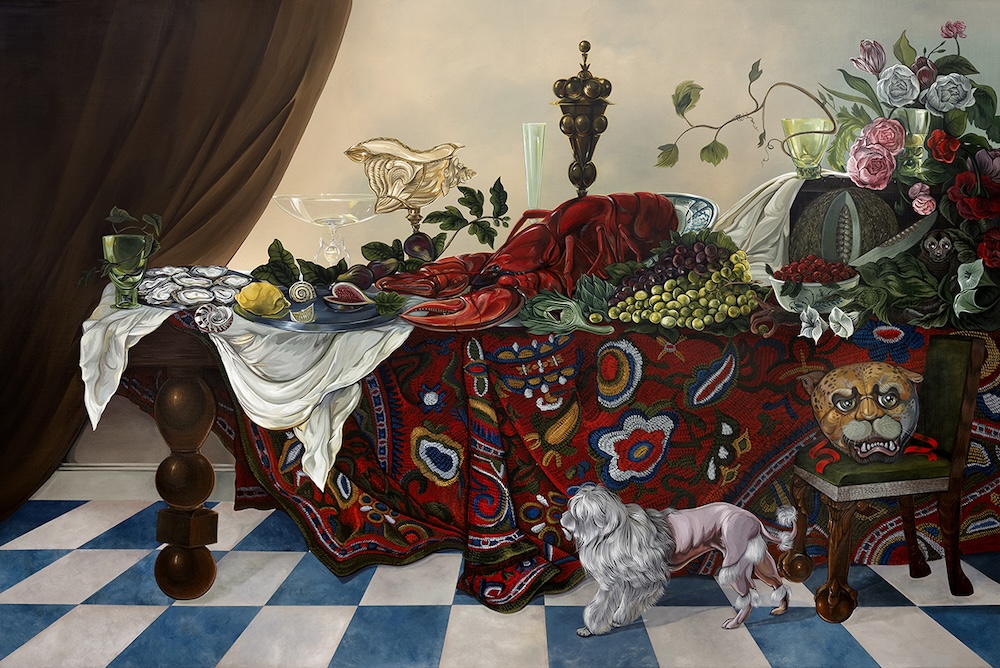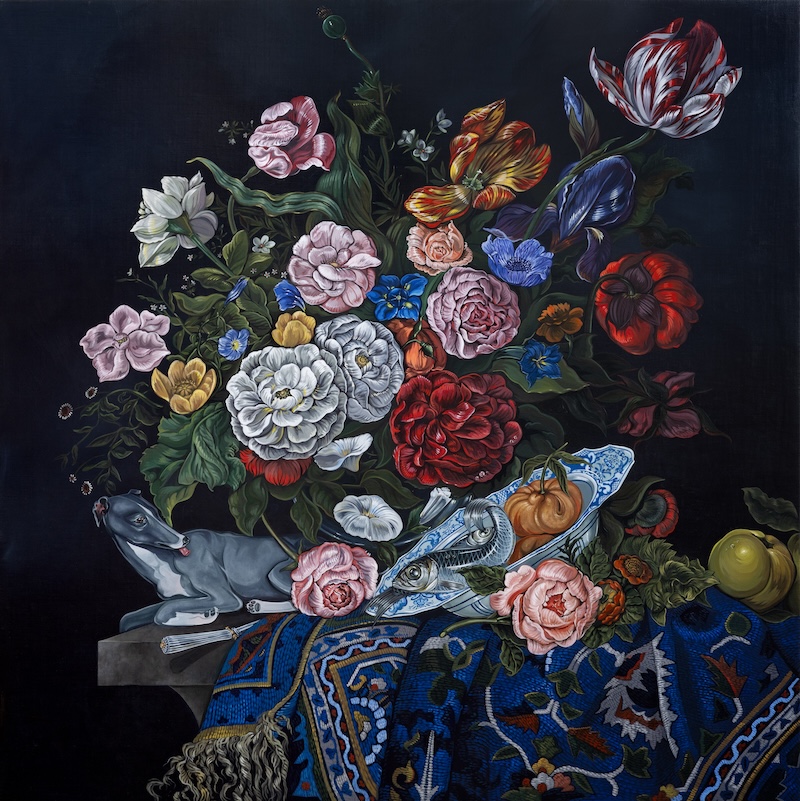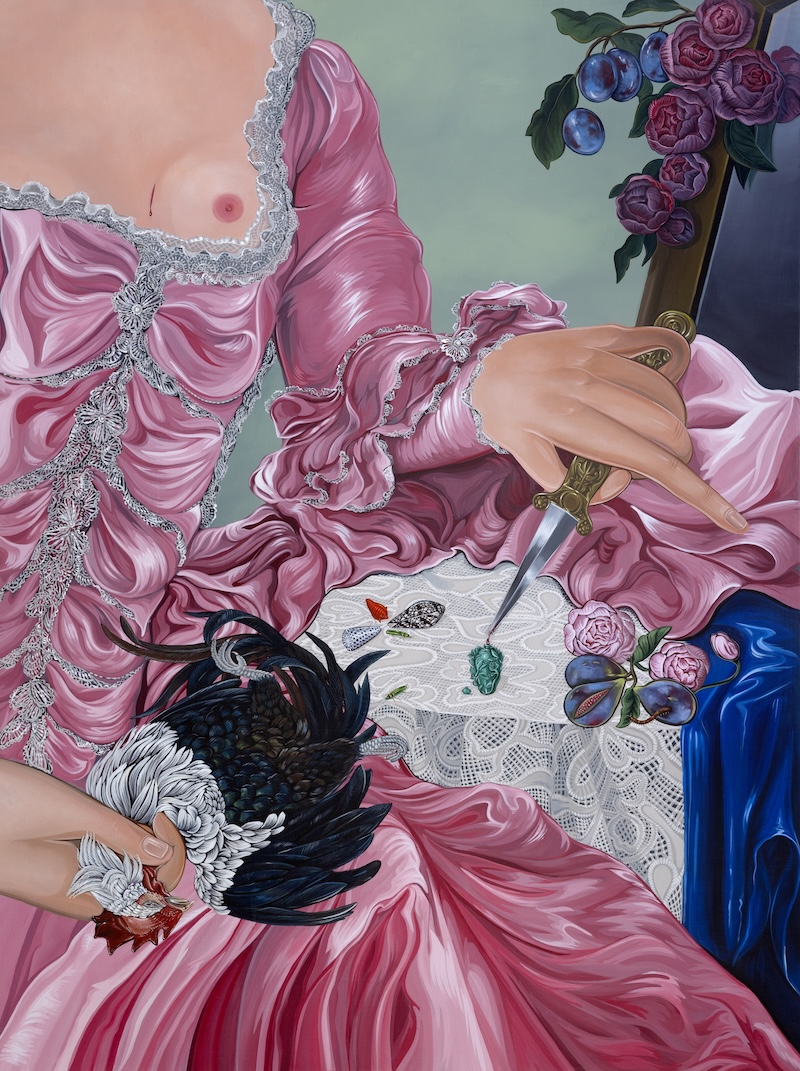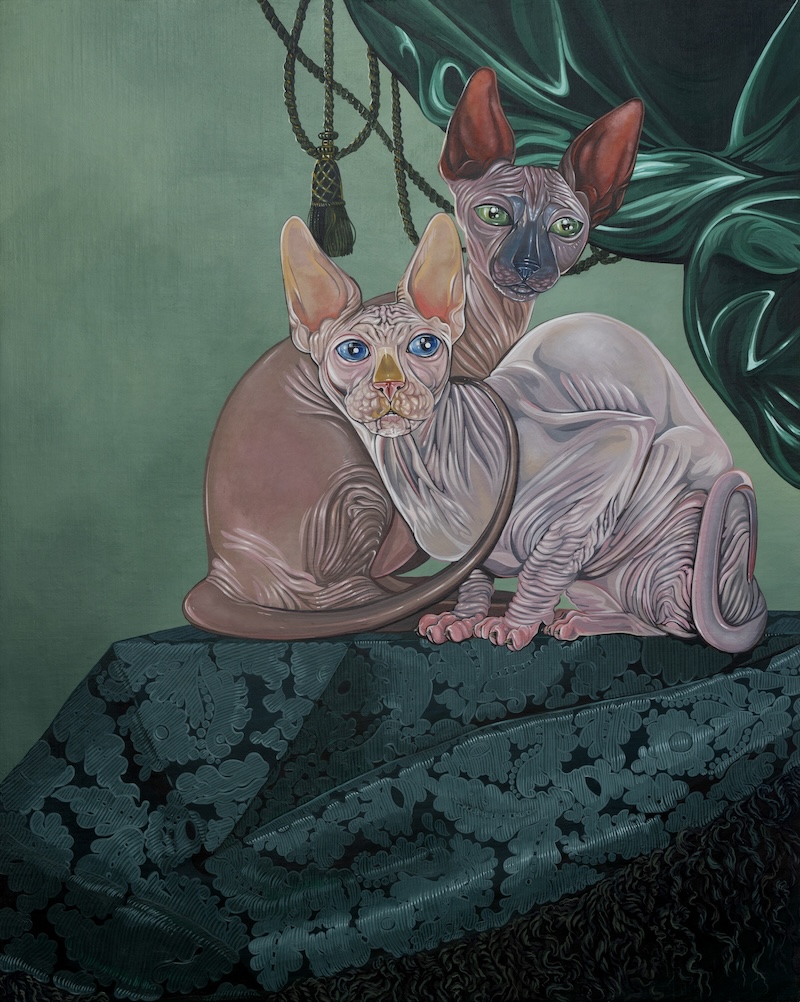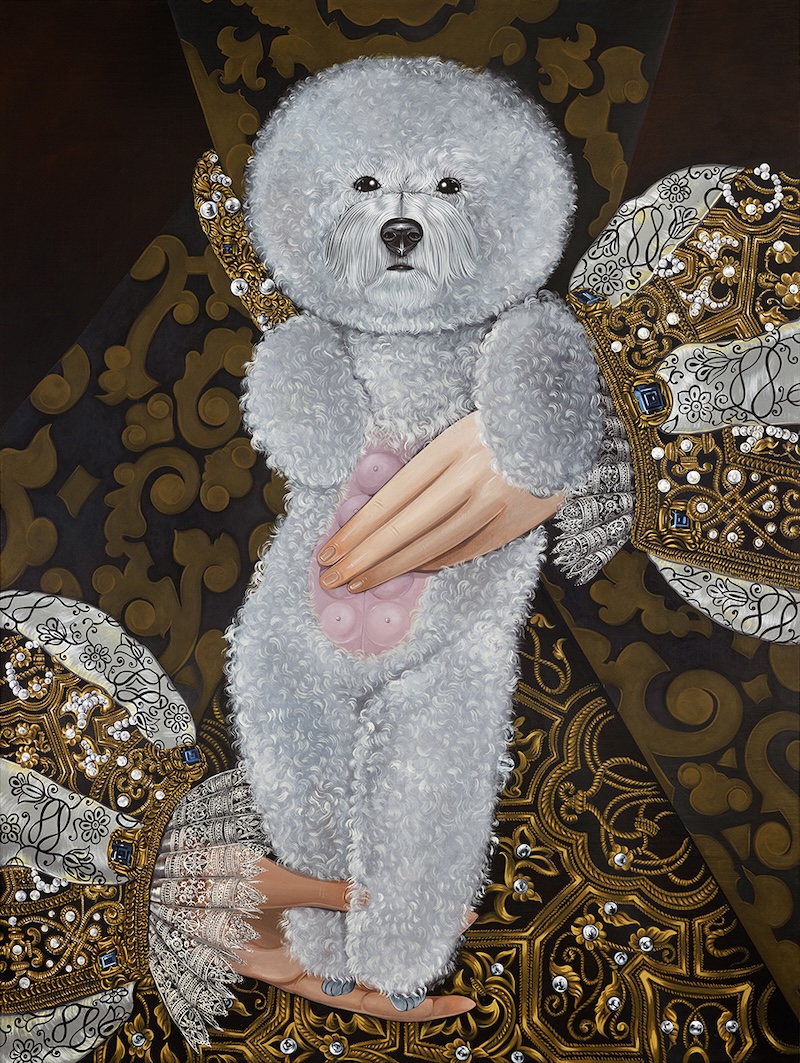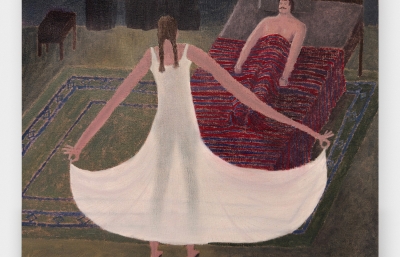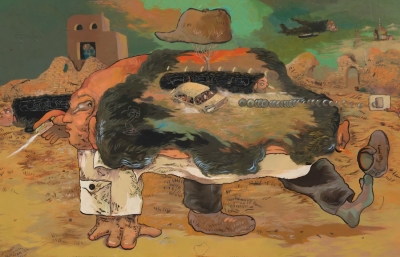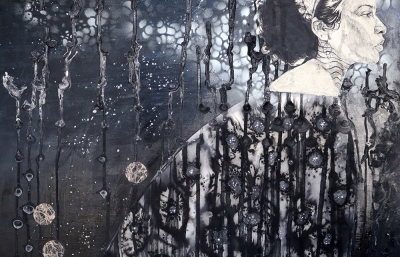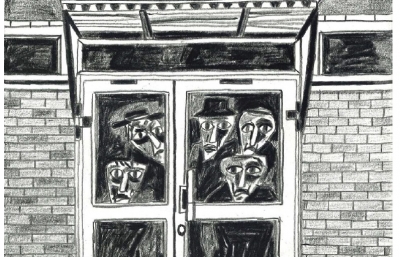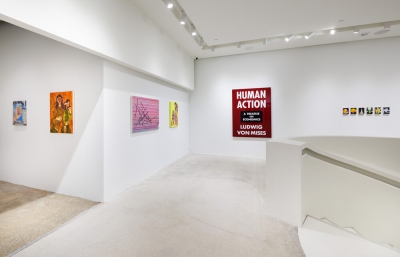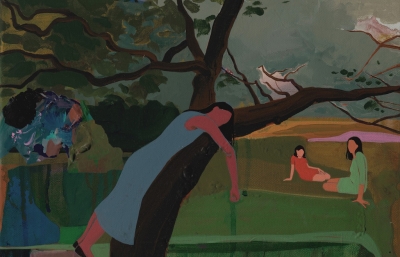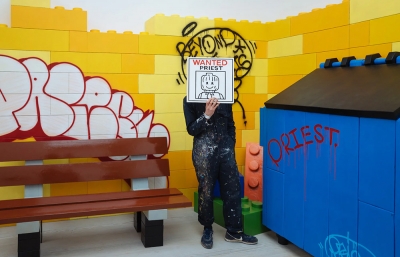Minutes into my conversation with Sabrina Bockler, she avidly referenced the “Tulip Mania” of the Dutch Golden Age and I knew I was in for something quite special. Bockler is that rare artist who can reflect on some of the most heralded eras of still-life and then perceptively discover a new avenue for research and interpretation. Her own work is a rich homage, dense with symbolism and recalling the great female painters of nearly 600 years ago as she allocates space for them in her own paintings. Her new solo show, Coquette, opens at Hashimoto Contemporary on June 29th in New York, a city of its own Dutch connections and history, as well as a rich appreciation for the classics.
Evan Pricco: I was thinking of a show you had in London last year, Menagerie, and some of the research you did for it. One of the things you cited for this show was the creation of still-lifes, especially in connection with women artists of the 15th century, as well as the inspiration of 17th-century Dutch rococo artist Rachel Ruysch. I want to know a bit about what was surprising in your research.
Sabrina Bockler: I’m always surprised that Rachel Ruysch isn’t more of a household name. She was such a heavy hitter for her time. I find it interesting to know that her works sold for more than Rembrandt’s during their lifetimes—an impressive feat for a female artist of the 17th century. You can see a vast knowledge of botany in her works. Beyond that, there’s so much vibrance and movement in her still life paintings that I find inspiring.
My research also led me to the “Tulip Mania” of the Dutch Golden Age. There was certainly a flower craze as new species of plants traveled around European markets. The wildly inflated cost of tulips made them a status symbol of the time. Tulips are so common today that you would hardly pay attention to them, but they were such a prominent feature in Dutch Golden Era still life. The way they are painted feels like a dance to me. It’s beautiful.
How did you take that research back to your own still-lifes?
For my show Menagerie, I focused on still life as an homage to female artists of the past and their limitations in accessing subject matter. I used to paint portraits years ago, and transitioning into still life forced me to reckon with the challenge of creating dynamic works and expression without relying on the human figure to convey emotion. I have found a way around it, with animals in place of the human figure, granting them emotion and agency, in a way, activating the paintings.
There’s a language within my work that references the past while connecting it to the present. Symbolism of gender, love, lust, class, and even death is woven throughout. I love the idea of the elements conversing from within. Something as innocuous as a fig can symbolize lust, sensuality, or abundance and prosperity.
Much of the last two shows in London, as well as the one in 2023 in Montreal, tackle and examine a historic view of "women's work," but there is also this really keen insight into what I think we can all call "over-abundance," our need to stuff and to overstuff. I'm wondering if your research sort of suggested that some of the women painters you reference from past centuries were sort of playing with the idea that their "role" was to create an environment of over-abundance, as if they had to maintain the home or preserve it as a fantasy world for themselves or for others.
I focus a lot on domestic identity, issues around class and gender, and human intervention with nature. There’s a sense of hand-holding with the past while bringing these ideas into a more contemporary context. It’s interesting to look back to the 15th—17th centuries and feel how foreign they were, yet some experiences and struggles for women’s autonomy remain relevant today. Domestic spaces are commonly perceived as female domains—the homemaker or housewife. I think about how childcare and domestic servitude are societal expectations for women rather than being considered meaningful labor and thus grossly undervalued. The coexistence of the home and fantasy can be thrilling. Women painters of the past managed to achieve a lot with very little access to subject matter as they broke through gender barriers.
The idea of hoarding opulence also interests me. There was a real dominance of religious and mythological themes, as well as paintings of nobility, in classical art. Artists needed to follow the money, as that was the source of patronage. I feel that we missed out on many stories and nuanced perspectives because of this. Paintings were representations of status and, in many ways, still are. My work holds a mirror to this kind of over-consumption, taking more than we need, intervening in the natural order. The thirst for wealth is never-ending, and the consequences of this attitude pose a very present threat in our current climate.
Would you say that mischief is part of your process?
Definitely. There is often a power struggle in my paintings—a tug of war between poised curation and the untamed attitudes of the subjects. There's a lot of naughty behavior and funny moments sprinkled throughout. I frequently use purebred dogs as these agents of chaos or as my primary figures. They are such an interesting representation of human intervention. We've manufactured some dog breeds to the point of deformity in the name of aesthetics. They can be quite comical or ethereal, depending on the mood.
I love what you said about a bit of rotting in the glamorous life. It really rings true to my process, taking this idea of excessive opulence and stirring it up with elements of the grotesque and uncanny. While the paintings can lure you in with beauty and decadence, there's something unsettling about them.
There was a bit of a shift in your work that you can see from 2022 and 2023—a darkness really, like you shut off the background lights.
It’s funny because I’ve been feeling that way too! Looking back on the works from 2023, I noticed how I’ve really leaned into the drama and chiaroscuro. I love a theatrical painting, which is partially why I’m so drawn to the Baroque and Rococo for inspiration. I use light to communicate a feeling or mood when emotion isn’t at the forefront of the painting. It can be such a powerful tool in setting the tone—it’s cinematic. I also find that the seasons often influence how I choose my palette. In fall and winter I tend to gravitate towards more dark, rich tones, while spring and summer tend to be light and playful. Winter paintings have a twinge of seasonal depression, I guess. 
What’s the focus for your show at Hashimoto Contemporary in NYC, and where is the research taking you?
The inspiration for this series emerged from a deeply personal place—the ups and downs of my life at the time. I was grappling with grief following a loss while also experiencing the joy of planning my wedding with my partner. It was a particularly vulnerable time for me, and it's a side of myself that hadn't fully surfaced in my art before.
My work is heavily research-based, and I found myself deeper down the rabbit hole of historical contexts surrounding love and life's fragility—exploring Venus, medieval love potions, and the dynamics of royal courts. There's a 'witchy' quality to the new works that I'm excited to share. One story really captured my curiosity: "The Affair of Poisons," detailing Madame de Montespan’s rise and fall as a prominent French courtesan and mistress to King Louis XIV. It was a glorified witch-hunt stemming from jealousy, but the accusations were juicy nonetheless. Madame de Montespans was accused of using love potions to remain in the king's favor, but unbeknownst to her, the contents were lethal. The accusations were never substantiated, but her reputation never recovered. I find it fascinating how sensationalized the stories of witchcraft were throughout history and how they were used to control women through fear.
I looked up Ruysch this morning and didn't realize that she was in The Hague in the early 1700s, as well as the first female member of the artist's society, Confrerie Pictura. That was a huge deal, a major breakthrough. I wonder, as you live and work as a painter in 2024, what is the last real meaningful and exciting breakthrough you’ve observed in the contemporary art world?
As to Ruysch, yes, she is so impressive in what she was able to accomplish professionally within her lifetime, all while having ten children! Her life is fascinating; I can't imagine the barriers she had to face.
I think there has been a noticeable shift towards inclusivity, with a greater emphasis on supporting and promoting artists from underrepresented backgrounds. We have such a long way to go in terms of representation, but I believe the most meaningful breakthrough in contemporary art is the amplification of these voices. I would love for inclusivity to be the norm and not the exception, as it was in Ruysch's day.
Sabrina’s solo show with Hashimoto Contemporary NYC will open on June 29th, 2024. This interview was originally published in our SUMMER 2024 Quarterly.

